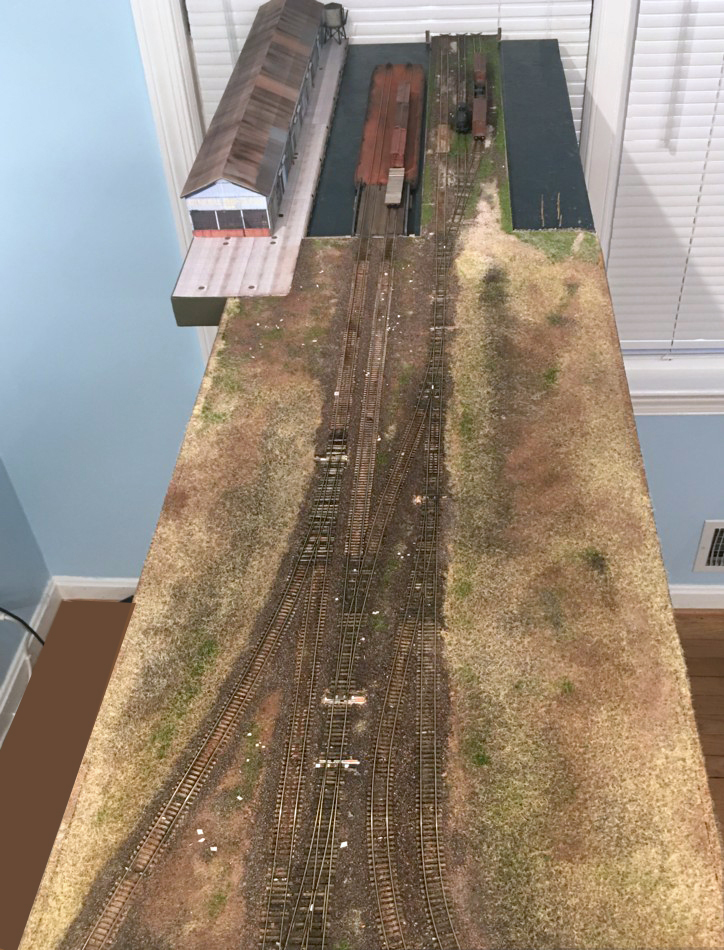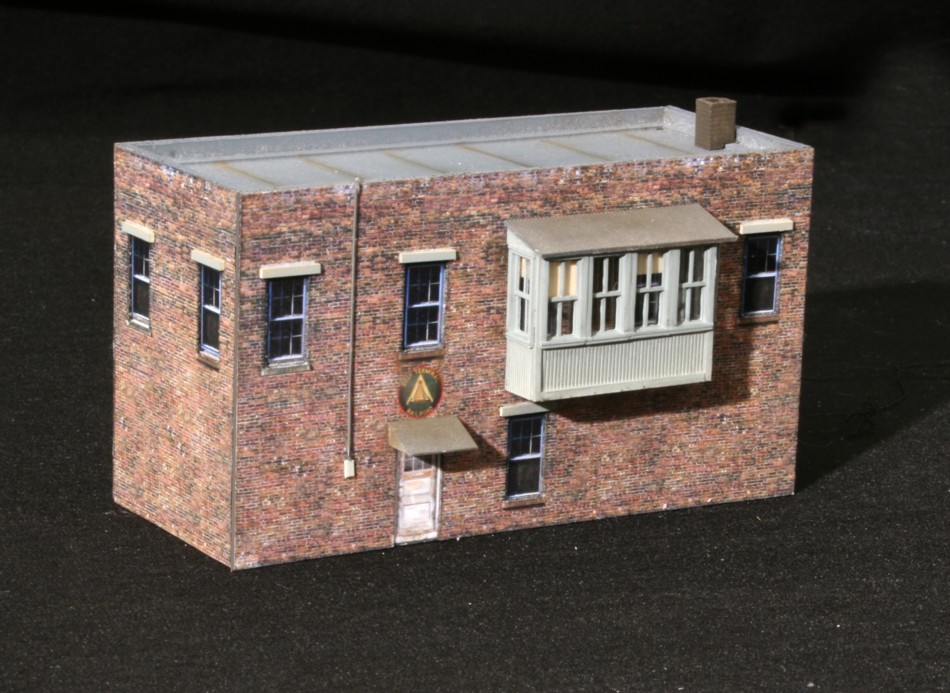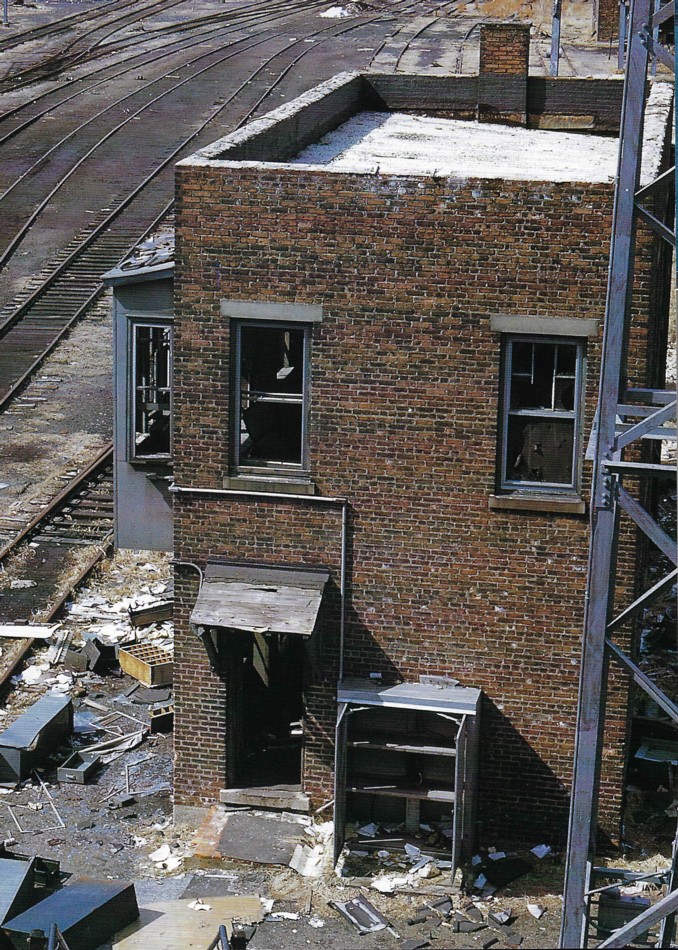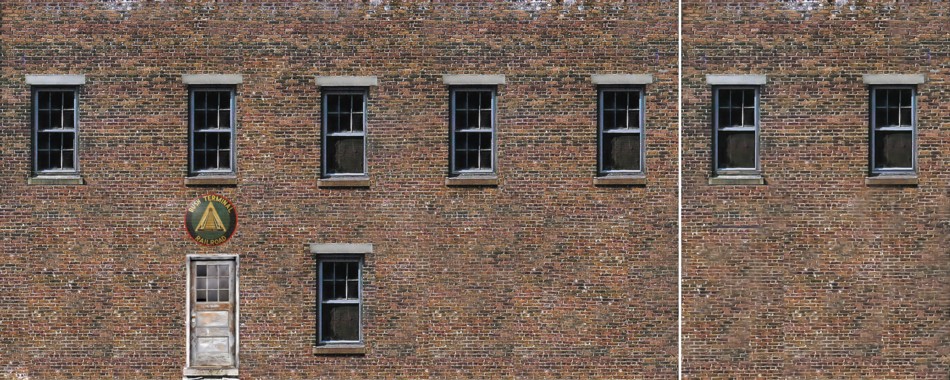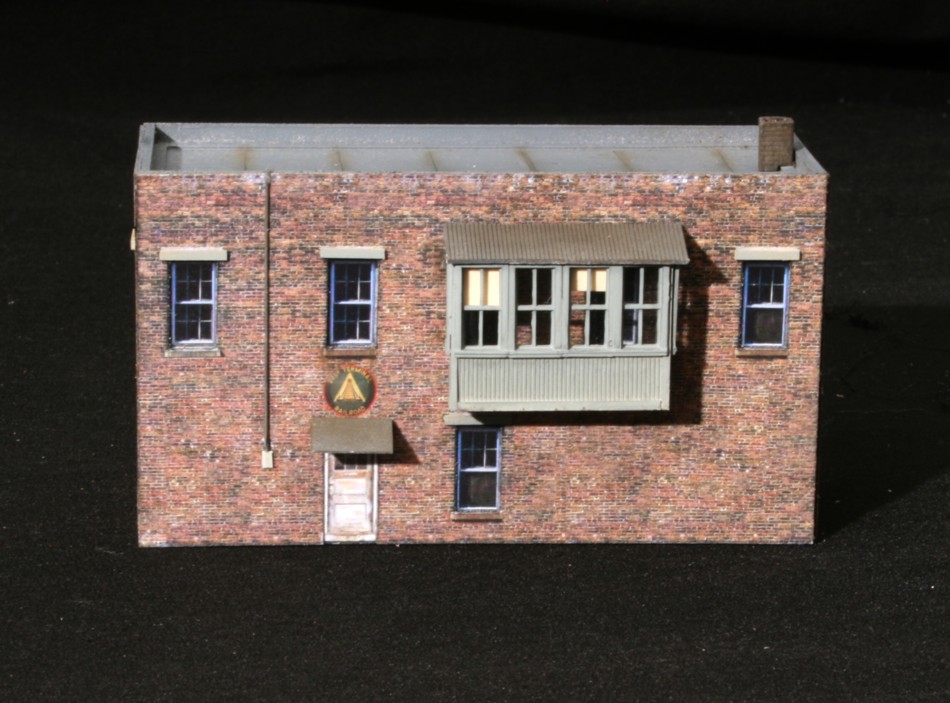As I continue to refine my technique of using photo wallpaper laminates instead of paint, one of the primary questions continuouisly on my mind is whether to use matte photo paper or gloss. On the surface it would seem matte would be the logical choice. However, at some point, just by chance I noticed that the colors on gloss paper appeared to be just so much more vivid and deeper. Was it my imagination? I didn’t think so. The problem is, if you go with gloss, at some point you’ll need to dull it down. Who wants a weathered freight station that shines like a clean window? And therein lies the problem. Dulling is easier said than done.
Even within the HP brand of printers, results vary widely as far as how dulling agents react with the various inks. In some cases earlier on, the dulling agent changed the ink to a purple or green hue. Not good. The next printer and ink combo. was totally fine. I could easily mist on Dullcote with zero adverse effects. That printer died and the new one had a different set of reactions, a noticeable frostiness upon drying that takes a lot of care and multiple light layers to avoid (this is with Dullcote or acryrlic flats. ). Inkjet printers tend to vary a lot when it comes to print quality.
One issue with photo paper is fade over time. The Downtown Spur is getting up there in years. Some structures are exhibiting noticeable fade and color degradation (my basement is a terrible environment. Humidity. Flooding, etc). Others have stood the test of time. The difference appears to be whether I used matte or glossy paper.
Yesterday I stumbled on an exceptional blog written by Joseph Eiten for Photo Paper Direct that lays the matter to rest.
He writes, “…..Matte photo paper is an industry term used to describe a whole host of Inkjet high-resolution matte papers. Amongst industry professionals and photographers, the real debate is whether ‘Matte photo paper’ is a true photo paper.
So is matte photo paper is a photo paper, it is up to you to decide.
From our point of view, having examined many thousands of prints over the years I’ll say NO. A real high quality photographic paper that is used in inkjet printers will provide a full colour gamut and spread with many more sub colours. True photographic paper will therefore yield the all shades of greys and colours that matte photo paper can’t.
What are its pros?
– Cheap option
– Can be more artistic if you like matte finish
– Good for using on day-by-day presentations
What are its cons?
– Print quality is nowhere near true photo papers
– Longevity and fading are a real concern
– Not a real photo feel and look”
So, there you have it, a pretty clear answer from somebody that appears to really understand the subject.


